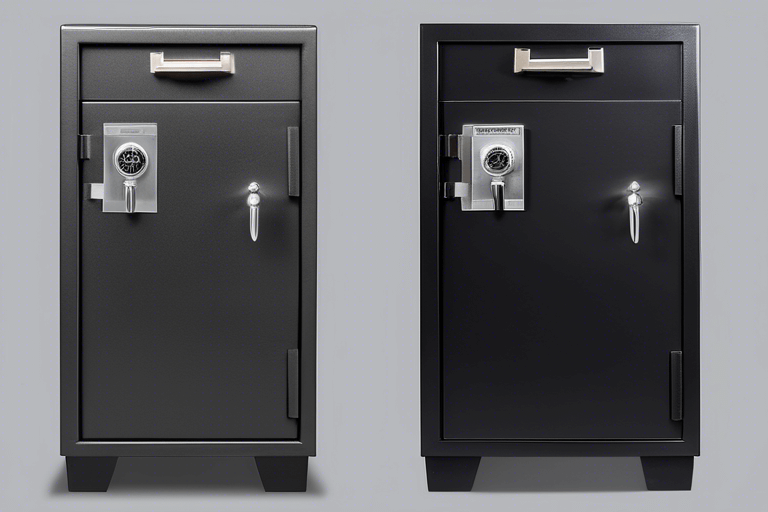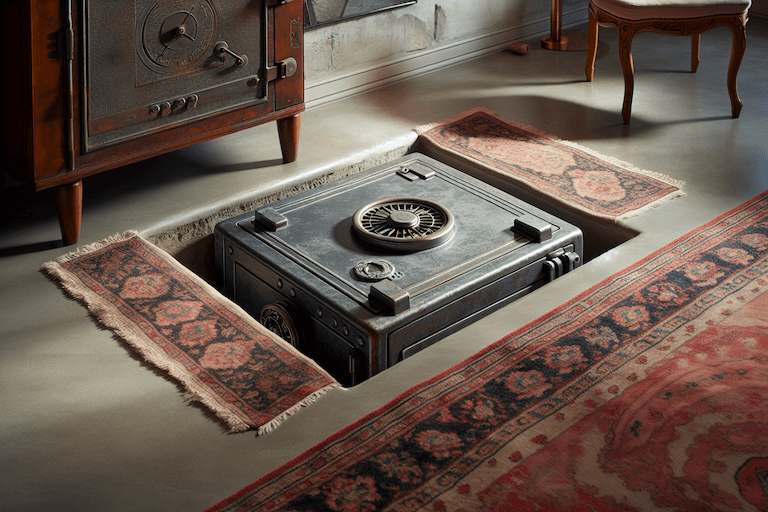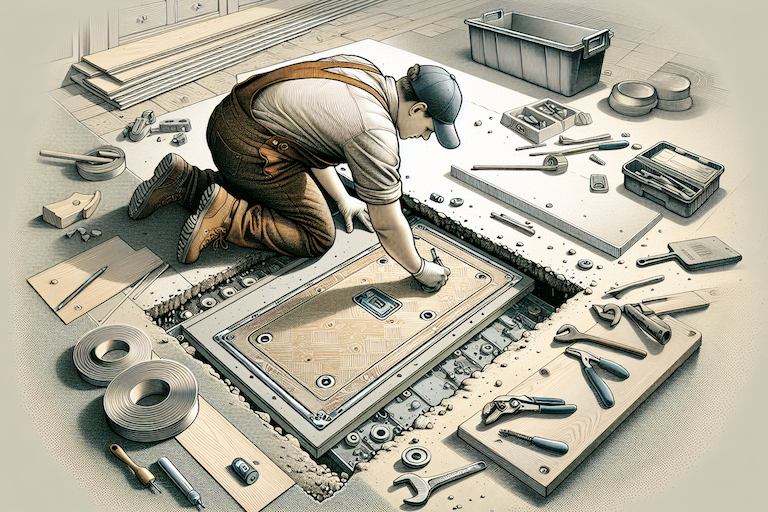
Guide to Depository Safes: Use Cases and Different Types
Drop safes are an essential security measure for businesses of all sizes. These safes provide a secure way to deposit cash, checks, and other valuable items without the need for constant monitoring.
In this article, we will explore the different types of drop safes available on the market and help you understand which one is the right fit for your business.
By the end of this guide, you will have the knowledge needed to make an informed decision and ensure the safety of your assets.
How Depository Safes Work and Who They Are Suitable For
Depository safes, also known as drop safes, are designed to allow businesses to deposit money or other valuable items without having to open the safe itself.
These safes typically feature a slot or a drawer where items can be easily dropped into. The deposited items are then securely stored inside the safe until they can be retrieved by authorized personnel or during regular cash pickups.
Depository safes are particularly suitable for businesses that handle a high volume of cash transactions, such as retail stores, restaurants, and financial institutions.
By using a depository safe, businesses can minimize the risk of theft and ensure that cash is securely stored until it can be deposited in a bank or picked up by armored vehicles.
The Importance of a Drop Safe for Businesses
Operating a physical business comes with its fair share of risks, and one of the most significant concerns is the security of assets.
Cash, checks, and other valuable items are prime targets for theft, and businesses need to have robust security measures in place to protect their assets. A drop safe plays a crucial role in minimizing this risk.
By having a drop safe in your business premises, you create a secure location to deposit cash and other valuable items throughout the day. This eliminates the need for keeping large amounts of cash in cash registers or unsecured areas, significantly reducing the risk of theft.
Additionally, drop safes provide a layer of accountability, as they allow you to track and monitor cash deposits, ensuring that every transaction is properly recorded.
Understanding the Different Types of Drop Safes
When it comes to drop safes, there are several types available in the market. Each type has its unique features and advantages, making it essential to understand the different options before making a decision.
Let's take a closer look at the various types of drop safes:
Front Loading Depository Safes
Front-loading depository safes are one of the most common types available. As the name suggests, these safes feature a front-loading drop slot where cash and other items can be easily deposited, along with a door on the same side to access the contents. The door is equipped with a secure locking mechanism to prevent unauthorized access.
Front-loading depository safes are ideal for businesses that require frequent and quick deposits throughout the day. The ease of use and accessibility make them a popular choice for retail stores and other businesses with high cash flow. These safes are available in various sizes, allowing businesses to choose the one that best suits their needs.
Rotary Depository Safes
Rotary depository safes are designed with a rotating drum or cylinder mechanism. The deposit slot is located on the top of the safe, and when an item is dropped in, it rotates into a secure storage compartment. The rotation mechanism ensures that the deposited items cannot be easily retrieved without authorized access.
These safes are particularly suitable for businesses that handle large volumes of cash or require deposits from multiple angles. The rotary mechanism offers added security, as it prevents unauthorized access even if someone tries to tamper with the deposit slot. Rotary depository safes are commonly used in casinos, gas stations, and other businesses with a high level of cash transactions.
Through-the-Wall Depository Safes
Through-the-wall depository safes come with a chute that passes through a wall, allowing the drop slot to be on one side of a wall, with the contents dropping into the safe installed on the other side of the wall.
Naturally, this installation provides a particularly discreet and secure way to deposit cash and other items, with the main safe typically being located in an adjacent room that can itself be locked.
Through the wall depository safes can be installed in various locations, such as retail store walls, office spaces, or even bank branches. The discreet nature of these safes makes them less visible to potential thieves, further enhancing the security of deposited items.
Factors to Consider When Choosing a Drop Safe
When choosing a drop safe for your business, there are several factors to consider:
Security Features
The primary purpose of a drop safe is to provide a high level of security for your deposited items. Along with the type of drop mechanism that best suits your needs, look for safes that have robust locking mechanisms, such as combination locks or electronic keypad systems.
Size and Capacity
Evaluate the size and capacity of the drop safe based on your business needs. Consider factors such as the volume of cash transactions, the size of the items you need to deposit, and the available space in your business premises. It is crucial to choose a drop safe that can accommodate your current and future requirements.
Installation Options
Different types of drop safes have different installation requirements. Consider factors such as wall thickness, floor mounting options, or built-in installations when choosing the right safe for your business. Consult with a professional to ensure that the installation process is done correctly and meets all necessary safety standards.
Budget
Lastly, consider your budget when choosing a drop safe. Compare prices, features, and warranties to find the best value for your money, but ultimately choose the best drop safe you can afford.
Best Practices for Using a Drop Safe
To ensure the optimal use and security of your drop safe, follow these best practices:
-
Train employees: Provide proper training to your employees on how to use the drop safe correctly. Emphasize the importance of following security protocols and ensure that everyone understands the procedures for depositing and retrieving items.
-
Regularly empty the safe: Avoid leaving large amounts of cash or valuable items in the drop safe for an extended period. Regularly empty the safe and deposit the contents in a secure location, such as a bank or a safe room.
-
Conduct periodic audits: Perform regular audits to verify the accuracy of the deposited items and ensure that all transactions are properly recorded. This helps identify any discrepancies or potential security breaches.
-
Maintain confidentiality: Limit access to the drop safe to authorized personnel only. Restrict the number of employees who have access to the safe and regularly update access codes or keys to maintain confidentiality.
Conclusion
Choosing the right type of drop safe is a critical decision for any business that deals with cash and other valuable items.
By understanding the different types of drop safes available and considering factors such as security features, size, installation options, and budget, you can make an informed decision that best suits your business needs.
Remember to follow best practices for using a drop safe to ensure the security and accountability of your deposited items. Invest in a high-quality drop safe, and you can have peace of mind knowing that your assets are well-protected.



